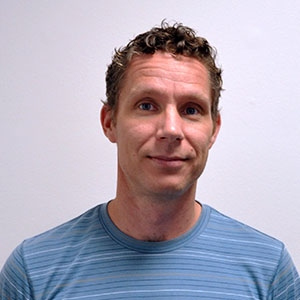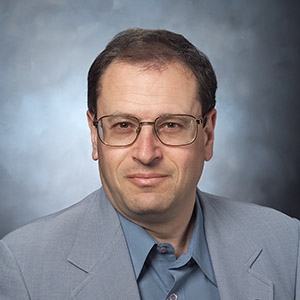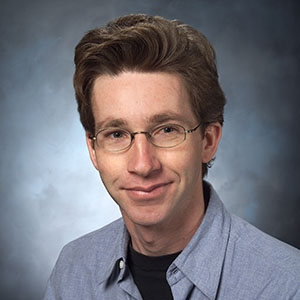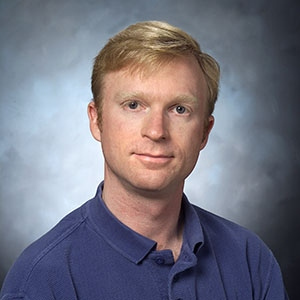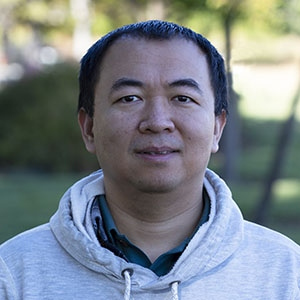Mission Statement
The EOS & Materials Theory (EMT) Group in the Physics Division performs theoretical and computational condensed-matter and materials physics research in support of major Department of Energy and LLNL programs, including Advanced Simulation and Computing (ASC), Laboratory Directed Research and Development (LDRD), Scientific Discovery through Advanced Computing (SciDAC), and Basic Energy Sciences (BES). This research includes fundamental quantum, atomistic, and multiscale modeling of materials properties over wide ranges of temperature and pressure and can extend from bulk solids and liquids to defects and nanostructures. The major focus of the Group is on understanding and elaborating the structural, thermodynamic, defect, and mechanical properties of materials.
Research
In the area of structural and thermodynamic properties the EMT Group studies both equilibrium and non-equilibrium phenomena and is concerned with the development and application of accurate multiphase equations of state (EOS) and high-pressure structural phase diagrams. Current forefront research includes the development of quantum simulation methods for high-Z metals and the study of f-electron materials with strong electron-electron correlation.
In the area of defects and mechanical properties the EMT Group investigates fundamental phenomena underlying the strength and failure of materials, including dynamic behavior at high strain rates, and it actively participates in a Laboratory-wide effort aimed at developing a predictive multiscale modeling capability for metals. Current forefront research includes fundamental studies of high-pressure and high-temperature thermoelasticity, the structure, mobility, and interaction of dislocations and other defects in bcc transition metals, the development of microscale dislocation dynamics simulations of single-crystal plasticity, and petascale fracture simulations.
The EMT Group utilizes a wide array of computational methods ranging from quantum-scale first-principles and semi-empirical tight-binding electronic structure methods, atomic-scale molecular dynamics (MD) and continuum level modeling.
Much of the research performed by the EMT Group is done in a collaborative manner, often involving researchers both inside and outside the Group and often involving strong connections to the experimental programs at LLNL. The Group works closely with members of the Quantum Simulations, Modeling & Simulations, High-Pressure Physics, and Shock Physics Groups in the Physics Division and also interacts frequently with groups in other LLNL Directorates. There are also numerous collaborations with researchers at other institutions, and historically, members of the EMT Group have been involved in many pioneering ASC alliances with US universities.
Maintained by metals-alloys-web [at] llnl.gov (Lorin X. Benedict)
Projects
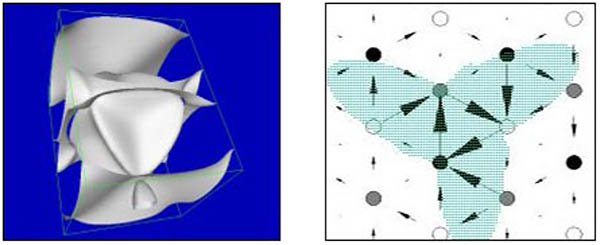
- Multiphase Equation of State and Melt
Myint, Benedict, Young, Moriarty, Sterne, Orlikowski, Wu - Phase Transition Kinetics
Belof, Zepeda-Ruiz, Myint, Chernov, Samanta, Sadigh, Benedict, Hamel, Oppelstrup - Cimarron Project
Graziani, Scullard, Castor, Glosli, Surh, Benedict, Richards, Whitley, Shepherd, Hau-Reige, London, Langdon, Stanton, Bauer - Quantum Simulations in Metals
Sadigh, Samanta, Hood, Yang, Moriarty, Pask - Physics of f-Electron Materials
Söderlind, Klepeis, Landa, Sadigh, Zhou, Hood, McMahan, Orlikowski, Pask, Yang, Moriarty
Defects and Mechanical Properties
- Alloy Strength
Rudd, Cynn, Klepeis, Pask, Yang - Interatomic Potentials for Strength
Rudd, Söderlind, Streitz, Richards - Dislocations and Point Defects
Yang, Söderlind, Moriarty - High-Pressure and Temperature Thermoelasticity and Strength
Klepeis, Söderlind, Orlikowski, Landa, Moriarty - Petascale Fracture Simulation
Moriarty, Hood, Yang
Maintained by metals-alloys-web [at] llnl.gov (Lorin X. Benedict)
Methods
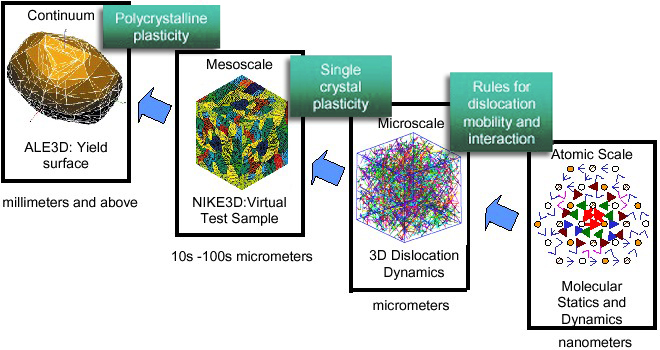
- Theory for Temperature-Dependent Phonons
P. Söderlind, B. Grabowski, L. Yang, and A. Landa - Electronic Structure and Quantum Simulations
Klepeis, Söderlind, Sadigh, Aberg, Zhou, Benedict, Hood, Landa, Orlikowski, Pask, Sterne, Wu, Yang, McMahan - Full-Potential Linear Muffin-Tin Orbital Method
Klepeis, Söderlind, McMahan, Orlikowski - Exact Muffin-Tin Orbital Method
Landa - Planewave Pseudopotential Method
Sadigh, Aberg, Zhou, Yang, Hood, Pask - Quantum Monte Carlo for Metals
Hood, Pask, DuBois, Sadigh - Dynamical Mean-Field Theory
Landa, McMahan - Tight-Binding
Wu, Klepeis - Quantum-Based Interatomic Potentials
Moriarty, Benedict, Hood, Streitz - Atomistic Simulation: MS and MD
Yang, Hood, Rudd, Moriarty - Continuum Modeling
Orlikowski, Wu, Benedict
Maintained by metals-alloys-web [at] llnl.gov (Lorin X. Benedict)
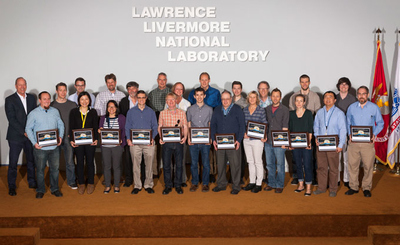
Söderlind, Åberg, Zhou, and Landa receive 2018 Global Security Golden Award
2/20/2019
Group members Per Söderlind, Daniel Åberg, Fei Zhou, and Alexander Landa received a 2018 Global Security Golden Award for "the outstanding work in making significant scientific and societal contributions to the Critical Materials Institute (CMI) Energy Innovation HUB."
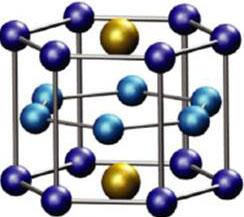
Researchers predict new efficient permanent magnet
10/9/2017
SmCo5 magnets are slightly less strong than neodymium magnets but have a higher Curie temperature and better temperature ratings. One way to increase SmCo5's magnetic strength is by replacing cobalt with iron. However, substituting all cobalt atoms for iron, which has a larger magnetic moment, to optimize the maximum energy product makes the ordinary hexagonal phase thermodynamically unstable. This phase is critical for the materials properties and it must be retained for a practical magnet. Researchers from LLNL, Uppsala University, and Ames Laboratory have proposed a new, efficient permanent magnet that substitutes most of the cobalt in SmCo5 with iron and dopes it with a small amount of nickel. Using first-principles electronic-structure calculations, the team has shown that this magnet, SmCoNiFe3, has exceptional magnetic properties, a large maximum energy product, a strong magnetic anisotropy, and a very high Curie temperature and could therefore potentially replace SmCo5 or Nd-Fe-B types in various applications. The researchers have also filed a provisional patent based on this research.
Long-standing controversy over magnetism in plutonium finally resolved
10/30/15
A team of LLNL scientists, for the first time, presented a parameter-free first-principles model for the lattice vibrations in the delta-phase of plutonium. The team's investigation, published in the Oct. 30 issue of Nature Scientific Reports, shows a decisive agreement between the density-functional-theory (DFT) model and the earlier inelastic X-ray measurements and therefore validating the accuracy of the employed theory.
Spin fluctuations explain anomalous thermal behavior of delta plutonium
9/28/2016
Plutonium metal has many unusual properties. Particularly, the important delta phase of plutonium displays properties with very anomalous thermal dependencies. This material shrinks or remains in the same volume upon heating as opposed to the normal thermal expansion seen in other conventional metals. Another intriguing aspect of delta plutonium is that its elastic moduli soften very strongly with temperature while the atomic volume (or density) remains nearly unaffected by the temperature change.
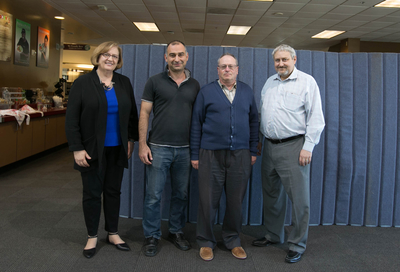
Per Söderlind, Babak Sadigh, Alex Landa receive 2016 Director's Science and Technology Award
9/26/2016
Lab Director Bill Goldstein on Thursday announced the winners of the 2016 Director's Science and Technology Awards, honoring five teams for exceptional accomplishments during the 2015 calendar year. "These awards are intended to recognize scientific and technical achievements that have made a significant impact on the Laboratory, our sponsors, or our mission," Goldstein said. "These achievements are widely recognized both inside the Laboratory and by the external S&T community."
Archived News

Tony Gonis elected an APS Fellow in 2014
1/12/2015
Tony Gonis, an expert in theoretical solid state physics, was cited by the Division of Computational Physics for "advancing multiple scattering theory electronic structure methods for metals, alloys and interfaces and for the dissemination of these techniques in condensed matter and materials science."
"I am grateful and humbled by the honor bestowed by my colleagues and can only hope to remain worthy of it," Gonis said.
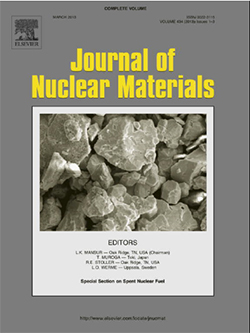
Research quashes the conventional picture of some thermodynamic functions
4/10/2013
A team of LLNL scientists has explored Uranium-Transuranium-Zirconium and Uranium-Transuranium-Molybdenum alloys as prospective fuels for advanced fast breeder reactors (12-SI-008 "Scientific Basis for Ultra-high Burn-up Nuclear Fuels").
The team's results, published in the March 2013 issue of Journal of Nuclear Materials, undermines the conventional thought that for random solid solutions with a positive deviation from ideality (have a positive heat of formation), there will likewise be a positive deviation from Zen's law (a linear variation of the atomic volume with alloy composition).
LLNL physicists Alexander Landa, Per Soderlind and Patrice Turchi discovered that a positive deviation from Zen's law for endothermic alloy formation (a scenario shown in most textbooks) occurs, actually, only for non-magnetic alloys. However, when a paramagnetic (disordered spin moment) metal is alloyed with a non-magnetic one, the absolute magnetic spin moment deviates negatively from a linear behavior leading to a negative deviation from Zen's law even if the heat of formation of this alloy remains positive.
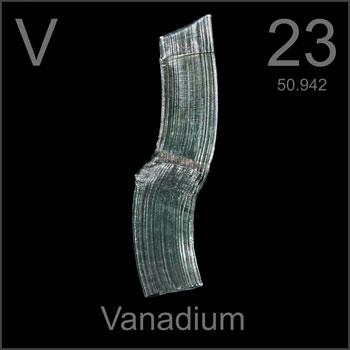
Phase stability at high temperatures and pressures in transition metals
1/17/2014
The LLNL team suggests that the equilibrium volume of an alloy is sensitive to magnetism, which gives rise to this counterintuitive behavior. A net magnetic spin moment implies spin polarization of the dominant bands (here actinide 5f bands) leading to a reduction of bonding electrons that tend to expand the equilibrium volume of the alloy (similar mechanism explains disruption of the systematic of the crystal structure, as in the case of the magnetic 3d transition metals). As a general rule, applicable to paramagnetic alloys, the equilibrium volume deviates from Zen's law in a similar fashion as the absolute magnetic spin moment does with important consequences on materials performance.
A team of LLNL scientists recently concluded a study of the phase stability of vanadium metal (a hard, silvery gray, ductile and malleable transition metal) and vanadium-chromium alloys at high temperatures and pressures.
The team, made up of Alexander Landa, Per Söderlind and Lin Yang, began their investigation nine years ago when they predicted that vanadium becomes mechanically unstable in its cubic phase during compression because of the intra-band nesting of the electronic "Fermi surface." The discovery led to experiments that uncovered several phonon-dispersion anomalies and possible phase transition induced by pressure. A rhombohedral phase was later discovered in diamond-anvil-cell measurements.
Even though the existence of the intra-band Fermi surface nesting in vanadium metal is widely acknowledged, it has been thought that elevated temperatures would washout the instability of the cubic phase and thus remove the rhombohedral phase in vanadium.
Utilizing the self-consistent ab initio lattice dynamics in conjunction with density functional theory, the LLNL team suggests, contrary to common belief, that pressure-induced mechanical instability of the body-centered-cubic vanadium metal will survive significant heating. The result contradicts the argument that the Fermi surface nesting in vanadium metal has a 'subtle' character that is easily destroyed by a moderate temperature increase. The team also found that the addition of chromium to vanadium decreases the temperature at which stabilization of the body-centered-cubic phase occurs at elevated pressure. This work also has important implication for strength in metals of interest to the Laboratory, such as vanadium.
Their article entitled "Ab initio phase stability at high temperatures and pressures in the V-Cr system" appears as a Rapid Communication in the Jan. 13 edition of Physical Review B.
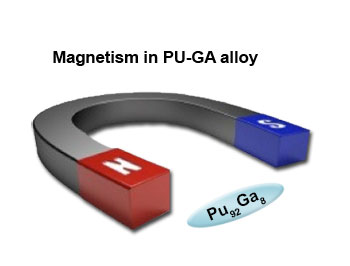
Magnetic spin confirmed in plutonium-gallium alloys
3/17/2014
Two Lawrence Livermore scientists, who have studied the plutonium-gallium (Pu-Ga) alloy for more than a decade, have confirmed and explained the magnetic spin of the alloy by applying first-principle electronic structure calculations.
Russian experimentalists recently discovered anti-ferromagnetism (the magnetic moments of atoms or molecules that align in an anti-parallel regular pattern with neighboring spins) magnetization measurements on Pu-Ga alloys.
The LLNL team lead by Per Söderlind and Alexander Landa, who began their theoretical investigation of Pu-Ga in 2002, confirmed and explained this discovery.
Their model has previously shown that anti-ferromagnetism cannot exist in unalloyed (pure) face-centered cubic plutonium, but their new study reveals that the addition of small amounts of gallium actually stabilizes the anti-ferromagnetic configuration.
Pu has different material properties when alloyed with certain metals because it is in the face-centered cubic crystal structure phase and Ga is one of the common alloy components.
"Magnetism (including anti-ferromagnetism) has been debated in the literature for years, so it's important that our theoretical model supports the recent magnetization experiments," Söderlind said.
Anti-ferromagnetism in Pu-Ga exists because distortions and mechanical instabilities in Pu are removed in the presence of Ga.
The properties of Pu-Ga alloys, particularly its stability and phase diagram, have been studied experimentally and theoretically for years by LLNL scientists because of its relevance for Pu's material properties as well as its importance for fundamental understanding of electron correlation in plutonium. The controversy regarding magnetism in plutonium metal has undergone prolonged scrutiny from LLNL experimentalists and theoreticians. The present study helps to shed some light on these concerns.
The article entitled "Theoretical confirmation of Ga-stabilized anti-ferromagnetism in plutonium metal" has been published in Journal of Nuclear Materials 448, 310 (2014).
Livermore researchers model spent nuclear fuels for potential energy
3/20/2014
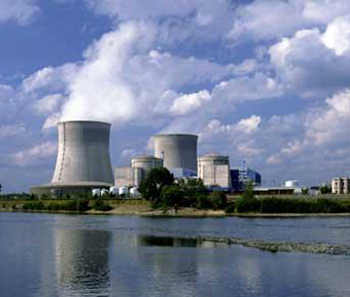
Lawrence Livermore scientists have modeled actinide-based alloys, such as spent nuclear fuel, in an effort to predict the impact of evolving fuel chemistry on material performance.
This work, funded by a Laboratory Directed Research and Development Program on "Scientific Basis for Ultra-high Burn-up Nuclear Fuels," could have direct implications for the use of spent nuclear fuel as another source of energy.
Despite the limited availability of experimental thermodynamic data, this new approach can predict important features contained in phase diagrams, namely phases and their stability in composition-temperature domains and microstructures, and more importantly, guide and motivate further experiments for validating the methodology and the data for subsequent modeling of materials performance at higher scale, according to Patrice Turchi, lead author of a review paper appearing in the March issue of the Journal of the Minerals, Metals & Materials Society (JOM).
The development of sustainable nuclear energy is critical to the energy security of the United States. And the next generation of nuclear reactor strategy involves preserving nuclear fuel resources, minimizing waste, and enhancing proliferation resistance. Today, only a small fraction of the enriched uranium that is used to fuel the U.S. fleet of more than 100 civilian reactors is actually converted to fission energy; the remaining material is identified as spent nuclear fuel (SNF) and, rather than being considered for its potential energy, is considered as waste. The technical issue thus falls to that of the breeding of plutonium (Pu) from the 238uranium (U) that constitutes the major component of the SNF. The burning of Pu and minor actinides (MAs) raises the challenge of the lack of knowledge about the complex material itself, namely a mixture of U, Pu and other MAs such as neptunium, americium and curium, and their interaction with oxygen (in the case of oxide MOX fuels) or transition metals such as zirconium or molybdenum (in the case of metal fuels) and the cladding materials as well.
The Livermore team, which consists of Turchi, Per Soderlind and Alexander Landa, has been trying to do just that through thermodynamic modeling of complex multi-component actinide-based alloys with input from state-of-the-art ab initio electronic structure energetics; systematic modeling that is crucial for fuel development, and for identifying trends in fuel behavior; and predicting the impact of evolving fuel chemistry on swelling, resistance to irradiation, fission gas management and thermal properties.
"We need to combine experiments that rely on modern characterizations with advanced theory, simulation and modeling to accelerate, beyond the 20 years commonly agreed upon now, new fuel and reactor development and qualifications in support of U.S. energy security," Turchi said. Hence the goal of the research is to create the fundamental scientific basis for the complex evolution of advanced nuclear energy fuel systems driven far from equilibrium, and to improve fuel development and qualification process to enable rapid, cost-effective decisions from a fully validated and integrated science-based platform.
"This is an "ideal to real" strategy for the development of the next generations of advanced nuclear energy systems," Turchi said. "The predicted thermodynamic driving forces can be used as input for upper-scale modeling, and in particular with coarse-grained phase-field modeling, to study the impact of microstructure evolution on nuclear fuel behavior and performance under normal and accidental conditions."
The development of sustainable nuclear energy is critical to the energy security of the United States. And the next generation of nuclear reactor strategy involves preserving nuclear fuel resources, minimizing waste, and enhancing proliferation resistance. Today, only a small fraction of the enriched uranium that is used to fuel the U.S. fleet of more than 100 civilian reactors is actually converted to fission energy; the remaining material is identified as spent nuclear fuel (SNF) and, rather than being considered for its potential energy, is considered as waste. The technical issue thus falls to that of the breeding of plutonium (Pu) from the 238uranium (U) that constitutes the major component of the SNF. The burning of Pu and minor actinides (MAs) raises the challenge of the lack of knowledge about the complex material itself, namely a mixture of U, Pu and other MAs such as neptunium, americium and curium, and their interaction with oxygen (in the case of oxide MOX fuels) or transition metals such as zirconium or molybdenum (in the case of metal fuels) and the cladding materials as well.
The Livermore team, which consists of Turchi, Per Soderlind and Alexander Landa, has been trying to do just that through thermodynamic modeling of complex multi-component actinide-based alloys with input from state-of-the-art ab initio electronic structure energetics; systematic modeling that is crucial for fuel development, and for identifying trends in fuel behavior; and predicting the impact of evolving fuel chemistry on swelling, resistance to irradiation, fission gas management and thermal properties.
"We need to combine experiments that rely on modern characterizations with advanced theory, simulation and modeling to accelerate, beyond the 20 years commonly agreed upon now, new fuel and reactor development and qualifications in support of U.S. energy security," Turchi said. Hence the goal of the research is to create the fundamental scientific basis for the complex evolution of advanced nuclear energy fuel systems driven far from equilibrium, and to improve fuel development and qualification process to enable rapid, cost-effective decisions from a fully validated and integrated science-based platform.
"This is an "ideal to real" strategy for the development of the next generations of advanced nuclear energy systems," Turchi said. "The predicted thermodynamic driving forces can be used as input for upper-scale modeling, and in particular with coarse-grained phase-field modeling, to study the impact of microstructure evolution on nuclear fuel behavior and performance under normal and accidental conditions."
Our Staff
Affiliated Scientists
Dr. Fred Fritsch
Computer Science for Equation of State (EOS) data libraries. Development and maintenance of interpolation algorithms in the LIP library.
Dr. Andy McMahan
Dynamical Mean Field Theory calculations of the properties of strongly correlated materials. Local-density predictions of the high pressure properties of solids, including phase transitions, as well the properties of novel energetic and cuprate materials. Tight-binding total energy representations.
Dr. John Moriarty
Theoretical condensed-matter and materials physics. Electronic structure, quantum-based interatomic potentials, and the atomistic simulation of materials properties. High-pressure physics, structural phase transitions, melting, and equation of state. Defects, mechanical properties, and multiscale materials modeling.
Dr. Francis Ree
Modeling denaturation of DNA, coagulation kinetics and stability of carbon clusters, liquid-liquid transition at high pressure, statistical mechanical theory of solid and liquid, thermodynamics of reactive mixtures such as plastics, foams, water, and high explosives,large-scale classical and quantum mechanical calculations, Raman frequencies of hydrocarbons under pressure.
Dr. Mat van Thiel
Formulation of semiempirical equations of state of simple molecules and explosives. Shock wave measurements on hydrogen, inert gases, CO2, etc. Kinetics of atomic Cl recombination. Infrared spectroscopy of unstable molecules.
Dr. Nick Winter
Development and application of first principles electronic structure methods, spectroscopy of transition metal ions, magnetism of alloys, ligand exchange reactions, carbon nanoparticles, plasticity of molecular crystals.
Dr. David Young
Developing new theoretical EOS models; producing new EOS tables for LLNL and other users; and consulting on the development of EOS software.
Maintained by metals-alloys-web [at] llnl.gov (Lorin X. Benedict)
Openings
The EOS & Materials Theory Group in the Condensed Matter Science Section of the Physics Division currently consists of 17 Ph.D. research scientists working in the areas of theoretical and computational condensed-matter and materials physics, and 4 computer scientists working in related areas. The work environment blends the collegial atmosphere of a major research university with the focus and resources of a large national laboratory. Research scientists are normally employed at one of three levels, depending on qualifications, programmatic need and funding availability. These levels are postdoctoral (tenure up to 3 years), flexible term (tenure up to 6 years), and career (indefinite tenure). New opportunities arise periodically in the EOS & Materials Theory Group and are usually at the postdoctoral or flexible-term level. Information on current specific opportunities may be posted below. General enquiries and expressions of interest may be sent at any time to the EOS & Materials Theory Group Leader, John Klepeis, at klepeis1 [at] llnl.gov (klepeis1[at]llnl[dot]gov) or at
Dr. John Klepeis
Lawrence Livermore National Laboratory
P.O. Box 808, L-045
Livermore, CA 94551-0808 USA
Current Opportunities
Summer student fellowships at the graduate level are often available. The deadline for applications is typically January or February each year. Contact Robert Rudd robert.rudd [at] llnl.gov ((robert[dot]rudd[at]llnl[dot]gov)) for more information.
Maintained by metals-alloys-web [at] llnl.gov (Lorin X. Benedict)
Contact Us
Group Leader
John E. Klepeis, klepeis1 [at] llnl.gov (klepeis1), (925) 422-6103
Administrative
Kim Rivera, Secretary, rivera41 [at] llnl.gov (rivera41), (925) 423-3084
| Name | Phone | |
|---|---|---|
| Lorin Benedict | benedict5 [at] llnl.gov (benedict5) | (925) 424-3034 |
| Randolph Hood | hood9 [at] llnl.gov (hood9) | (925) 422-5787 |
| Alexander Landa | landa1 [at] llnl.gov (landa1) | (925) 424-3523 |
| Daniel Orlikowski | orlikowski1 [at] llnl.gov (orlikowski1) | (925) 424-3197 |
| John Pask | pask1 [at] llnl.gov (pask1) | (925) 422-8392 |
| Per Söderlind | soderlind1 [at] llnl.gov (soderlind1) | (925) 423-4667 |
| Philip Sterne | sterne1 [at] llnl.gov (sterne1) | (925) 422-2510 |
| Christine Wu | wu5 [at] llnl.gov (wu5) | (925) 424-4096 |
| Lin Yang | yang1 [at] llnl.gov (yang1) | (925) 424-4153 |
| Fei Zhou | zhou6 [at] llnl.gov (zhou6) | (925) 422-3679 |
The country code for phone calls to the US is +1.
General mailing address:
Lawrence Livermore National Laboratory
P.O. Box 808, L-045
Livermore, CA 94551-0808 USA
For deliveries requiring a street address use:
Lawrence Livermore National Laboratory
7000 East Ave., L-045
Livermore, CA 94550-9234 USA
Fax numbers:
(925) 422-2851
(925) 423-5733
Maintained by metals-alloys-web [at] llnl.gov (Lorin X. Benedict)


